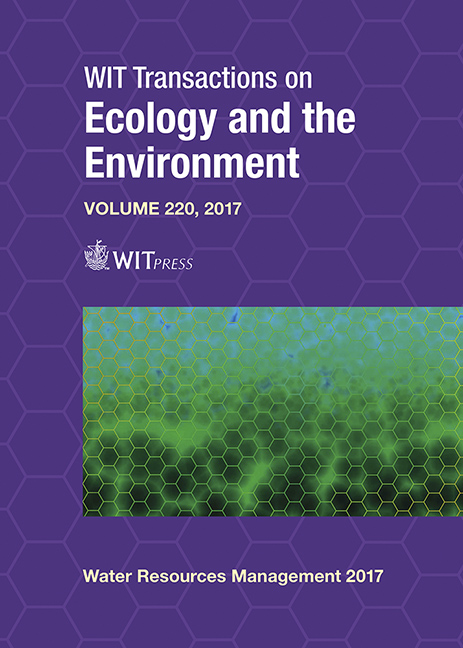REDOX PROPERTIES OF IRON-BASED MATERIALS IN WATER TREATMENT TECHNOLOGIES: AN OVERVIEW OF LABORATORY VERSUS FIELD EXPERIENCES
Price
Free (open access)
Transaction
Volume
220
Pages
12
Page Range
57 - 68
Published
2017
Size
570 kb
Paper DOI
10.2495/WRM170061
Copyright
WIT Press
Author(s)
JAN FILIP, PETRA SKÁCELOVÁ, PETR ZAJÍČEK, JANA OBORNÁ, ELENI PETALA, RADEK ZBOŘIL
Abstract
In this paper, iron-bearing compounds where the iron atoms are in different oxidation states (i.e. metallic iron on one side and superoxide with iron VI on the other side) are introduced and their applicability for water treatment is clearly demonstrated. The versatility of iron atoms in various forms (mainly in variable oxidation states) could cover broad range of water treatment technologies (reduction, sorption, oxidation, and combined technologies even in relation to biotechnologies and other physical fields – electric and/or magnetic) when iron is in reduced (Fe0), oxidized (FeII,III), or superoxide (FeIV,V,VI) state, respectively. Thus, they could cover treatment of broad range of pollutants (organic compound like TCE, PCE, DCE, BTEX; inorganic compounds including heavy metals, CrVI, arsenic, metal cyanides, nitro-compounds; as well as emerging contaminants from the broad family of pharmaceuticals, endocrine disruptors, pesticides and herbicides). Such technologies proved to be well applicable and cost-effective in many cases, environmentally-friendly with formation of non-toxic iron oxides (i.e. environmentally benign product with sorption/coagulation properties and also magnetic properties allowing magnetic separation of reaction products from the treated media) representing, thus, competitive alternative to conventional water-treatment technologies. The high potential of the presented technologies lies mainly in the restoration of polluted groundwater and soil environment, waste- and surface-water treatment, as well as in the treatment of drinking water where fast and highly-efficient elimination of particular compounds and/or microorganisms is a key parameter.
Keywords
zerovalent iron, nanoparticles, ferrate(VI), iron oxides, water treatment, redox reactions, laboratory experiments, pilot tests, oxidation, reduction





